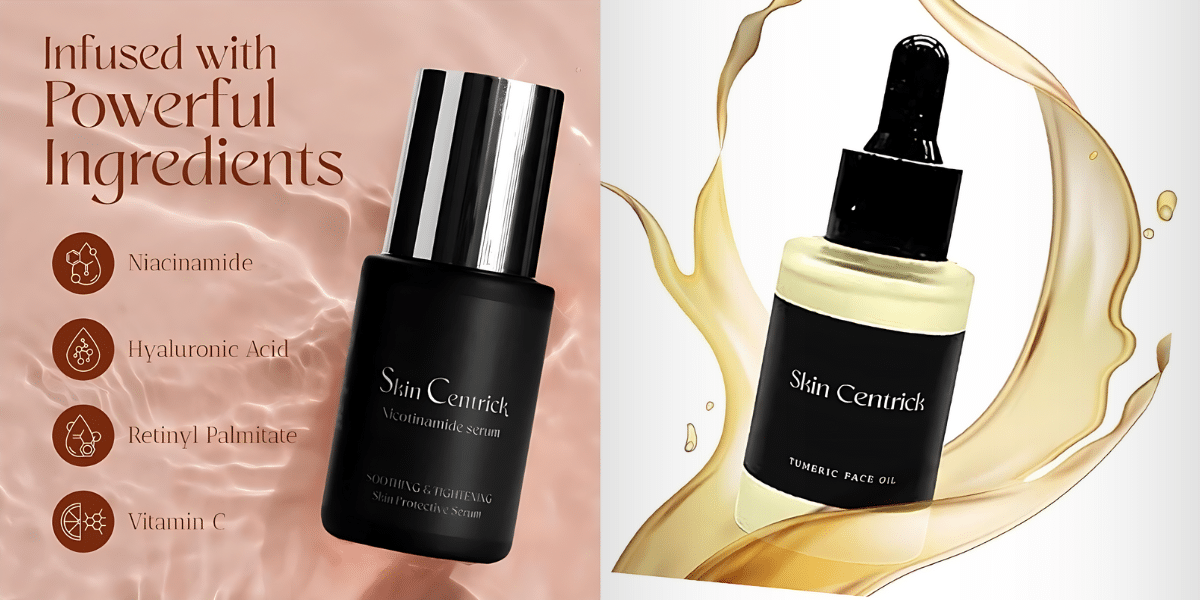The skincare industry has seen a remarkable shift towards the use of serums and oils, particularly those designed to enhance skin health. Skin centrick serums and oils are gaining popularity due to their ability to deliver concentrated nutrients directly to the skin, addressing specific concerns such as hydration, aging, and uneven texture.
Serums, typically lightweight and fast-absorbing, are formulated with high concentrations of active ingredients. These ingredients, which may include vitamins, antioxidants, and peptides, target a variety of skin issues. For instance, vitamin C serums can brighten the skin and reduce the appearance of dark spots, while hyaluronic acid serums hydrate and plump the skin, minimizing fine lines and wrinkles.
Oils, on the other hand, offer a different set of benefits. They provide a barrier that locks in moisture and protects the skin from environmental stressors. Natural oils such as jojoba, argan, and rosehip are rich in essential fatty acids and nutrients that nourish the skin. These oils can help to balance oil production, making them suitable for both dry and oily skin types. Additionally, they can soothe inflammation and promote healing, making them an excellent choice for individuals with sensitive or acne-prone skin.
The combination of serums and oils in a skincare routine can amplify results. While serums penetrate deeply to deliver potent ingredients, oils can seal in those benefits, enhancing overall effectiveness. This synergistic relationship allows for a tailored approach, enabling individuals to customize their skincare routines based on their unique skin types and concerns.
Moreover, skin centrick serums and oils are often formulated with clean, non-toxic ingredients, appealing to consumers who prioritize safety and sustainability in their skincare choices. Many brands emphasize transparency in their formulations, allowing users to make informed decisions about the products they apply to their skin. This shift towards clean beauty reflects a growing awareness of the importance of ingredient integrity.
The rise of personalized skincare routines further bolsters the popularity of serums and oils. Skincare enthusiasts are increasingly customizing their routines, selecting products based on individual skin needs rather than adopting a one-size-fits-all approach. This trend towards personalization has given rise to brands offering tailor-made serums and oils, which are specifically formulated to address individual concerns such as hyperpigmentation, sensitivity, or acne. As a result, consumers are becoming more informed about the ingredients they choose, fostering a deeper connection between their skincare habits and overall skin health.
In addition to their efficacy, serums and oils are also becoming more accessible across various price points, making them a feasible option for a wider range of consumers. As more affordable and effective products hit the market, these skincare staples are no longer seen as luxury items reserved for high-end beauty aficionados. Instead, they are becoming an essential part of everyday routines, valued for their ability to produce visible results without the need for invasive treatments or procedures. This democratization of skincare reflects a broader movement within the beauty industry towards inclusivity and accessibility, enabling more people to enjoy the benefits of targeted skincare solutions.
Incorporating skin centrick serums and oils into daily skincare routines can lead to noticeable improvements in skin texture, tone, and overall health. Regular use encourages a radiant complexion, reduces signs of aging, and helps maintain the skin’s natural barrier. As awareness of the benefits of these products continues to spread, more individuals are likely to explore serums and oils as essential components of their skincare regimens.
Published by: Khy Talara
















